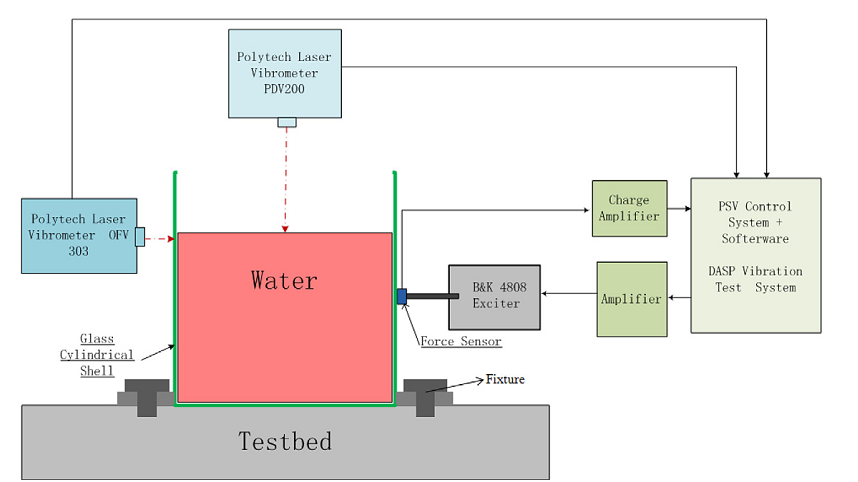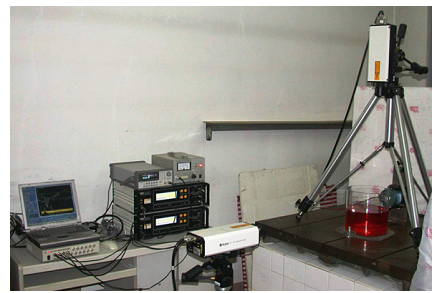The phenomenon of low-frequency standing waves induced by high-frequency excitation was observed and reported early in 1972. As well, some scientists had also systematically explored various linear and nonlinear surface waves of the water inside cylindrical shell undergoing forced vibration including the nonlinear standing waves. They obtained quantitative experimental data which provided new insights into mechanism of this nonlinear phenomenon.
For this research, an experimental investigation on nonlinear low frequency gravity water waves in a partially filled cylindrical shell subjected to high frequency horizontal excitations is presented. WANG Dajun from the College of Engineering, Peking University, LI Junbao from the Institute of Acoustics, Chinese Academy of Sciences and other researchers did this experimental study. Based on comprehensive review of these experiments in recent years significant new results on three points are demonstrated.
Shapes and spectrums of linear and nonlinear water waves are measured. Also, regions of excitation force magnitudes and frequencies for onset of gravity waves are measured. In addition, the phenomenon of transitions between different gravity wave patterns is observed.
Within this research, the characteristics of natural frequencies and mode shapes of the water–shell coupled system are discussed. The boundaries for onset of gravity waves are measured and plotted by curves of critical excitation force magnitude with respect to excitation frequency. For nonlinear water waves, the time history signals and their spectrums of motion on both water surface and shell are recorded.
The shapes of water surface are also measured using scanning laser vibrometer. In particular, the phenomenon of transitions between different gravity wave patterns is observed and expressed by the waterfall graphs. These results exhibit pronounced nonlinear properties of shell–fluid coupled system.
It should be mentioned that the study of this phenomenon has highlighted two areas of research: the nonlinear behavior of fluid–structure coupled system and the hydrodynamic evolution of fluid from high to low frequency vibration. The second area has been explored by other scientists with significant new findings. This research is focused on the former area, i.e., nonlinear behavior. The present paper is an experimental study.
The experimental set up is shown in Fig. 1 and Fig. 2 schematically and physically.

Fig. 1. Schematic of the experimental system (Image by WANG Dajun).

Fig. 2. Experimental set up (Image by WANG Dajun).
A partially water filled cylindrical glass shell is horizontally excited by an electro-magnetic exciter triggered by a signal producer through an amplifier.
The significance of the nonlinear phenomena presented here can be remarked in practices. For example, the low-frequency wave with large amplitude may induce the instability of the vessel filled with fluid. On the other hand, this implies one of possible ways by which the energy with high frequency can be transformed into the energy with low frequency.
This research entitled “Nonlinear low frequency water waves in a cylindrical shell subjected to high frequency excitations – Part I: Experimental study” was published online: http://www.sciencedirect.com/science/article/pii/S1007570412005564 and will be published on the Communications in Nonlinear Science and Numerical Simulation (Vol. 18, No. 7, Pages 1710–1724, July, 2013).


